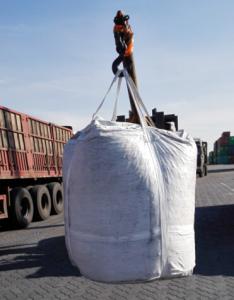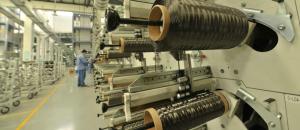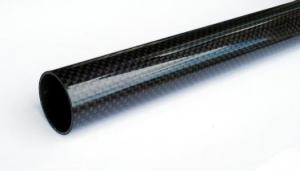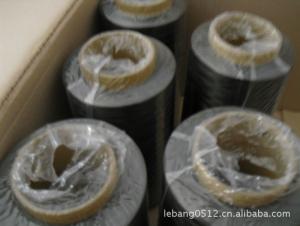Fuel Grade Petroleum Coke Calcined Coke Hot Sale
- Loading Port:
- Tianjin
- Payment Terms:
- TT or LC
- Min Order Qty:
- 20 m.t.
- Supply Capability:
- 1500 m.t./month
OKorder Service Pledge
OKorder Financial Service
You Might Also Like
Quick Details
Place of Origin: China (Mainland)
Application: carben additives
Dimensions: fix carben morethan98%,sulphur less5%
Chemical Composition: nature graphite powder
attribute: briquette grade
shape: <SPAN style="BORDER-BOTTOM: 0px; BORDER-LEFT: 0px; PADDING-BOTTOM: 0px; MARGIN: 0px; PADDING-LEFT: 0px; PADDING-RIGHT: 0px; FONT-FAMILY: inherit; WORD-WRAP: break-word; VERTICAL-ALIGN: baseline; BORDER-TOP: 0px; BORDER-RIGHT: 0px; PADDING-TOP: 0px" class=attr-value title=block/powder>block/powder
classify: carbon additives/petroleum coke
Packaging & Delivery
| Packaging Details: | 50kg/bag,25kg/bag or as customer requirement |
|---|---|
| Delivery Detail: | 20DAYS after payment |
Specifications
Fuel Grade Petroleum Coke Calcined Coke Hot Sale
Petroleum coke products can be divided into needle coke, sponge coke, projectile coke and coke breeze four kinds.
Calcined Petroleum Coke
F.C.: 98.5%MIN
ASH: 0.8% MAX
V.M.: 0.7%MAX
S:0.5%MAX
Moisture: 0.5%MAX
Structure
Fuel Grade Petroleum Coke Calcined Coke Hot Sale
Shape: granule
- Dimensions: 0-1mm, 1-5mm, 1-6mm, 2-8mm, etc
- Product Type: Carbon Additive
- C Content (%): 98-99.5% MIN
- Working Temperature: -
- S Content (%): 0.5%-0.7%MAX
- Ash Content (%): 0.7%MAX
- Volatile:0.8%MAX
- Moisture: 0.5% MAX
- ADVANTAGE: low ash & sulfur
- COLOR: Black
Feature
Fuel Grade Petroleum Coke Calcined Coke Hot Sale
Physics and chemistry performance:
Unit | Index | |||||
No.1 | No.2 | No.3 |
| |||
Density | g/cm3 | 2.04 | 2.00 | 2.00 | ||
sulphur content | %≤ | 0.5 | 1.0 | 2.5 | ||
volatility | %≤ | 0.5 | 0.5 | 0.5 | ||
ash content | %≤ | 0.5 | 0.5 | 0.5 | ||
moisture | %≤ | 0.3 | 0.5 | 0.5 | ||
charcoal | %≤ | 98.5 | 98.0 | 98.0 | ||
Image
Fuel Grade Petroleum Coke Calcined Coke Hot Sale
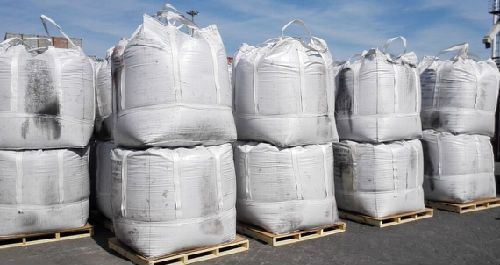
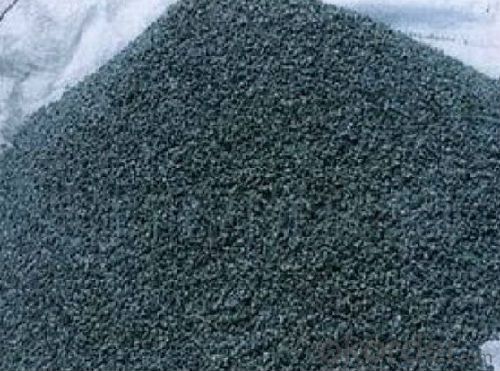
FAQ:
Fuel Grade Petroleum Coke Calcined Coke Hot Sale
How to classify calcined petroleum coke?
1) According to difference of sulfur content, can be divided into high sulfur coke (sulfur content more than 4%), sulphur in coke sulfur content (2% 4%) and low sulfur coke (sulfur content below 2%).
2) Petroleum coke products can be divided into needle coke, sponge coke, projectile coke and coke breeze four kinds:
3) Needle coke, has obvious needle-like structure and fiber texture, mainly used for steel-making in high power and ultra-high power graphite electrode. As a result of needle coke in sulfur content, ash content, volatile matter and true density and so on have strict quality requirements, so the production process of needle coke and raw materials have special requirements.
4) The sponge coke, high chemical reactivity, low content of impurities, mainly used in the aluminum industry and carbon industry.
5) Focal or spherical coke: the projectile shape is round, diameter 0.6-30 mm, usually from the production of high sulphur, high asphaltic residual oil, can only be used as industrial fuel power generation, cement etc.
6) Coke breeze: fluidized coking process, the fine particles (0.1- 0.4 mm) in diameter, high volatile, high expansion coefficient, cannot be directly used for electrode preparation and carbon industry.
Advantage:
Fuel Grade Petroleum Coke Calcined Coke Hot Sale
1. High quality and competitive price.
2. Timely delivery.
3. If any item you like. Please contact us.
Your sincere inquiries are typically answered within 24 hours.
- Q: How about Zonta carbon technology
- Never go, unless you are a bully, and will mix, inside mess
- Q: How does carbon impact the prevalence of wildfires?
- There are several ways in which carbon affects the occurrence of wildfires. First and foremost, carbon dioxide (CO2) is a greenhouse gas that contributes to climate change. As the concentration of CO2 increases in the atmosphere, temperatures rise, resulting in drier conditions in many areas. These dry conditions create a more favorable environment for the ignition and spread of wildfires. Moreover, carbon plays a significant role in the amount of fuel available to feed wildfires. Carbon-based materials, such as dead vegetation, trees, and other organic matter, serve as the main source of fuel for fires. As carbon accumulates in ecosystems, either naturally or through activities like deforestation, the potential fuel for wildfires increases. This increased fuel load can lead to more frequent and intense fires. In addition, carbon has an impact on the health and vitality of forests. Higher levels of atmospheric CO2 can enhance plant growth, resulting in denser vegetation. Although this may seem beneficial, it actually contributes to the intensity and severity of wildfires. Denser vegetation means there is a greater amount of fuel available, especially when combined with the dry conditions caused by climate change. This combination becomes a recipe for more destructive fires. Lastly, the combustion of carbon-based materials during wildfires releases large amounts of carbon dioxide into the atmosphere. This creates a positive feedback loop, as the increased carbon emissions contribute to further climate change, which, in turn, worsens the conditions for wildfires. In summary, carbon plays a critical role in determining the occurrence and severity of wildfires through its impact on climate change, fuel load, forest health, and the release of greenhouse gases during combustion. It is essential to address carbon emissions and implement effective forest management practices in order to mitigate the risks and consequences associated with wildfires.
- Q: What is the structure of a diamond, a form of carbon?
- A diamond, which is a form of carbon, has a crystal lattice structure. In this arrangement, each carbon atom is covalently bonded to four other carbon atoms, forming a tetrahedral arrangement. This creates a repeating pattern and a three-dimensional network of carbon atoms. The bonds between the carbon atoms are incredibly strong, which is why diamonds are so hard and durable. The carbon atoms in a diamond are arranged in a cubic crystal system, specifically the face-centered cubic (FCC) structure. In this system, each carbon atom is surrounded by eight neighboring carbon atoms, resulting in a dense and tightly packed structure. The strong covalent bonds and compact arrangement of carbon atoms in the diamond lattice give diamonds their unique properties. These properties include exceptional hardness, high thermal conductivity, and optical brilliance.
- Q: What are the impacts of carbon emissions on the stability of mountain glaciers?
- Mountain glaciers are significantly affected by carbon emissions, which have significant consequences for their stability. The release of carbon dioxide and other greenhouse gases into the atmosphere contributes to global warming and climate change. This rise in global temperatures directly impacts the health and stability of mountain glaciers. One of the main outcomes of increased carbon emissions is the accelerated melting of mountain glaciers. Warmer temperatures cause glaciers to melt at a faster pace, resulting in a decrease in their size and volume. This not only affects the visual appeal of these natural wonders but also has major implications for water resources and ecosystems. Mountain glaciers serve as natural reservoirs, holding water in the form of ice and gradually releasing it over time. This process helps regulate water flow in rivers and streams, ensuring a consistent water supply for downstream communities, agriculture, and ecosystems. However, as carbon emissions contribute to glacier melting, this natural water storage mechanism is disrupted. The loss of glaciers leads to reduced water availability during dry seasons and can result in water scarcity for communities dependent on glacier meltwater. Moreover, the retreat of mountain glaciers due to carbon emissions has ecological consequences. These glaciers provide critical habitats for various plant and animal species. The loss of glacier ice and associated ecosystems can have a ripple effect on the entire ecosystem, resulting in the decline or even extinction of species reliant on glacier-fed environments. The impacts of carbon emissions on mountain glaciers also extend beyond local communities and ecosystems. Glacial meltwater plays a significant role in the overall water supply in many regions globally. As glaciers shrink and vanish, the availability of water resources becomes uncertain, particularly in areas heavily reliant on glacier meltwater. This can potentially lead to conflicts over water resources and worsen existing tensions. In conclusion, the stability of mountain glaciers is severely affected by carbon emissions. The accelerated melting of glaciers disrupts water availability, threatens ecosystems, and presents challenges for water resource management. It is crucial to reduce carbon emissions to mitigate these impacts and preserve the integrity and functionality of mountain glaciers.
- Q: How does carbon affect the pH of rainwater?
- The pH of rainwater can be influenced by carbon, which occurs when carbon dioxide (CO2) in the atmosphere dissolves in rainwater. This process is known as the formation of carbonic acid (H2CO3). As a result of this reaction, the pH of rainwater decreases, making it more acidic. The carbonic acid breaks down into hydrogen ions (H+) and bicarbonate ions (HCO3-), which further contribute to the acidity of rainwater. Consequently, higher levels of carbon dioxide in the atmosphere, such as those caused by human activities like the combustion of fossil fuels, can result in an increase in the formation of carbonic acid and subsequently lower the pH of rainwater, leading to the occurrence of acid rain.
- Q: How does carbon impact the stability of savannah ecosystems?
- The stability of savannah ecosystems relies heavily on carbon, which is crucial for all living organisms and involved in various ecological processes. Carbon exists primarily in the form of organic matter, which is vital for the growth and development of plants, the primary producers in these ecosystems. In savannahs, carbon affects stability in multiple ways. Firstly, carbon dioxide (CO2) plays a significant role in regulating the global climate as a key component of the Earth's atmosphere. Savannahs have the ability to sequester and store large amounts of carbon in their vegetation and soils, thereby mitigating climate change by reducing CO2 levels in the atmosphere. Carbon is also essential for plant growth through photosynthesis. Savannah plants, like grasses and scattered trees, utilize carbon dioxide from the air to produce carbohydrates and other organic compounds. This process not only provides plants with energy but also contributes to the overall productivity of the ecosystem. The stability of savannah ecosystems is also dependent on the interaction between plants and animals. Carbon-rich vegetation serves as a food source for herbivores, which in turn support predators. The carbon cycle ensures a continuous flow of energy and nutrients throughout the food web, maintaining ecosystem balance and stability. Moreover, the carbon content in savannah soils affects their fertility and ability to retain moisture. Organic matter derived from decaying plant material improves soil structure, nutrient availability, and water holding capacity. This, in turn, supports vegetation growth and sustains the diverse array of species found in savannah ecosystems. However, human activities such as deforestation, agricultural practices, and the burning of fossil fuels are disrupting the carbon balance in savannahs. Deforestation removes carbon-rich trees and plants, reducing the overall carbon storage capacity of the ecosystem. Additionally, the release of carbon dioxide from burning fossil fuels contributes to the greenhouse effect and climate change, which can disrupt savannah ecosystem stability. In conclusion, carbon plays a critical role in maintaining the stability of savannah ecosystems. It influences climate regulation, supports plant growth, provides energy for the food web, and enhances soil fertility. However, human activities that disrupt the carbon balance in these ecosystems can have detrimental effects on their stability and overall health. Therefore, it is essential to conserve and restore savannah ecosystems to preserve their carbon storage capacity and ensure long-term stability.
- Q: What is the role of carbon in organic chemistry?
- Carbon is a fundamental element in organic chemistry, playing a crucial role in the structure and function of organic compounds. It is unique in its ability to form stable covalent bonds with other carbon atoms and a wide variety of other elements, leading to the vast diversity of organic molecules found in nature. Carbon's ability to bond with itself and other elements allows for the formation of long chains, branched structures, and ring systems, giving rise to the complex structures and shapes characteristic of organic compounds. In organic chemistry, carbon serves as the backbone for many important biomolecules such as carbohydrates, lipids, proteins, and nucleic acids that are essential for life. It is the basis for the structural diversity and complexity found in living organisms. Carbon's ability to form multiple bonds and its tetrahedral geometry also contribute to the versatility of organic compounds, allowing for the presence of various functional groups such as hydroxyl, carbonyl, amino, and carboxyl groups. Furthermore, carbon's ability to undergo chemical reactions, including oxidation, reduction, addition, substitution, and elimination reactions, is vital in organic chemistry. These reactions are fundamental for the synthesis and modification of organic compounds, enabling the creation of new molecules with specific properties and functions. Carbon's role as a central element in organic chemistry also extends to the study of reaction mechanisms, stereochemistry, and the understanding of the behavior and reactivity of organic compounds. Overall, carbon's unique properties and its ability to form stable covalent bonds with other elements make it the foundation of organic chemistry. Its presence allows for the diverse array of organic compounds that exist, and its participation in chemical reactions enables the synthesis and manipulation of these compounds. Without carbon, the field of organic chemistry and the study of life's building blocks would not be possible.
- Q: What are the economic impacts of carbon emissions?
- The economic impacts of carbon emissions are significant and wide-ranging. Carbon emissions, primarily from the burning of fossil fuels, contribute to climate change and global warming. These changes in the climate have a direct impact on various economic sectors and can lead to both short-term and long-term economic consequences. One of the most notable economic impacts of carbon emissions is the cost of dealing with the effects of climate change. Extreme weather events, such as hurricanes, floods, and droughts, become more frequent and intense as a result of carbon emissions. These events can cause extensive damage to infrastructure, homes, and businesses, leading to significant economic losses. For example, in 2017, the United States experienced a record-breaking hurricane season, with hurricanes Harvey, Irma, and Maria causing an estimated $265 billion in damages. Moreover, carbon emissions also affect agricultural productivity. Climate change alters temperature and precipitation patterns, which can disrupt crop production and decrease yields. This, in turn, affects food prices and availability, impacting both consumers and farmers. Additionally, carbon emissions contribute to the acidification of oceans, which can harm marine ecosystems and disrupt fisheries, leading to economic losses for fishing communities. Furthermore, carbon emissions have implications for public health, which can result in economic burdens. Air pollution caused by carbon emissions can lead to respiratory and cardiovascular illnesses, increasing healthcare costs and reducing workforce productivity. In addition, extreme heatwaves, exacerbated by carbon emissions, can have a detrimental impact on worker productivity and labor capacity, affecting economic output. To mitigate the economic impacts of carbon emissions, many countries have implemented policies and regulations to reduce greenhouse gas emissions. These policies often include carbon pricing mechanisms, such as carbon taxes or cap-and-trade systems, which aim to incentivize the transition to cleaner energy sources and reduce carbon emissions. While these policies may have short-term economic costs, they can also create opportunities for innovation and the development of green technologies, which can lead to long-term economic benefits. In conclusion, the economic impacts of carbon emissions are significant and multifaceted. From the costs of dealing with climate-related disasters to the effects on agriculture, public health, and productivity, carbon emissions have far-reaching consequences. Addressing these impacts through the implementation of effective climate policies is crucial to mitigate the economic risks and foster a sustainable and resilient economy.
- Q: Helmet material: ABS composites, FRP, carbon fiber, what are the differences? How to tell good from bad?
- ABS resin is one of the five major synthetic resin, impact resistance, heat resistance, low temperature resistance, chemical resistance and excellent electrical properties, but also has the characteristics of easy processing, product size stability, good surface gloss, easy coloring, painting, but also the surface plating metal, electroplating, welding, hot pressing and bonding the two processing, widely used in the industrial field of mechanical and automotive electrical and electronic instruments, textiles and construction, is a very widely used thermoplastic engineering plastics.Materials (Composite) is a material consisting of two or more than two different materials which, in physical or chemical ways, macroscopically form new properties. Various materials in the performance complement each other, and produce synergistic effect, so that the comprehensive performance of composite material is better than the original material, and meet a variety of different requirements. The matrix materials of composite materials are divided into two major categories: metal and nonmetal. Metal matrix commonly used aluminum, magnesium, copper, titanium and its alloys. The non-metallic matrix mainly includes synthetic resin, rubber, ceramic, graphite, carbon and so on.
- Q: Learn photography for nearly half a year, has always wanted to buy a tripod, want to buy carbon fiber tripod, what brand is better? The machine is D700+24-70About 3000 is too expensive ~ consider 1000 more just fine. Wage earners!
- In fact, only three foot two brands: brand and other brands of Gitzo
Send your message to us
Fuel Grade Petroleum Coke Calcined Coke Hot Sale
- Loading Port:
- Tianjin
- Payment Terms:
- TT or LC
- Min Order Qty:
- 20 m.t.
- Supply Capability:
- 1500 m.t./month
OKorder Service Pledge
OKorder Financial Service
Similar products
Hot products
Hot Searches
Related keywords
